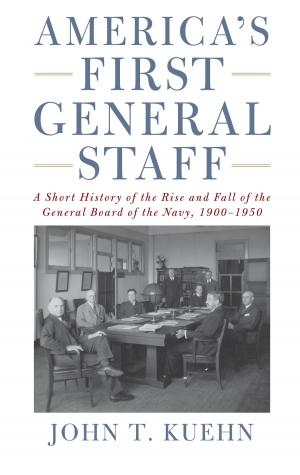The Other Space Race
Eisenhower and the Quest for Aerospace Security
Nonfiction, History, Americas, United States, 20th Century| Author: | Nicholas Michael Sambaluk | ISBN: | 9781612518879 |
| Publisher: | Naval Institute Press | Publication: | December 15, 2015 |
| Imprint: | Naval Institute Press | Language: | English |
| Author: | Nicholas Michael Sambaluk |
| ISBN: | 9781612518879 |
| Publisher: | Naval Institute Press |
| Publication: | December 15, 2015 |
| Imprint: | Naval Institute Press |
| Language: | English |
The Other Space Race is a unique look at the early U.S. space program and how it both shaped and was shaped by politics during the Cold War. Eisenhower’s New Look” expanded the role of the Air Force in national security, and ultimately allowed ambitious aerospace projects, namely the Dyna-Soar,” a bomber equipped with nuclear weapons that would operate in space. Eisenhower’s space policy was purely practical, creating a strong deterrent against the use of nuclear arms against the United States.
With the Soviet launch of Sputnik in 1957, the political climate changed, and space travel became part of the United States’ national discourse. Sambaluk explores what followed, including the scuttling of the Dyna-Soar” program and the transition from Eisenhower’s space policy to John Kennedy’s. This well-argued, well-researched book gives much needed perspective on the Cold War’s influence on space travel and it’s relation to the formation of public policy.
With the Soviet launch of Sputnik in 1957, the political climate changed, and space travel became part of the United States’ national discourse. Sambaluk explores what followed, including the scuttling of the Dyna-Soar” program and the transition from Eisenhower’s space policy to John Kennedy’s. This well-argued, well-researched book gives much needed perspective on the Cold War’s influence on space travel and it’s relation to the formation of public policy.
The Other Space Race is a unique look at the early U.S. space program and how it both shaped and was shaped by politics during the Cold War. Eisenhower’s New Look” expanded the role of the Air Force in national security, and ultimately allowed ambitious aerospace projects, namely the Dyna-Soar,” a bomber equipped with nuclear weapons that would operate in space. Eisenhower’s space policy was purely practical, creating a strong deterrent against the use of nuclear arms against the United States.
With the Soviet launch of Sputnik in 1957, the political climate changed, and space travel became part of the United States’ national discourse. Sambaluk explores what followed, including the scuttling of the Dyna-Soar” program and the transition from Eisenhower’s space policy to John Kennedy’s. This well-argued, well-researched book gives much needed perspective on the Cold War’s influence on space travel and it’s relation to the formation of public policy.
With the Soviet launch of Sputnik in 1957, the political climate changed, and space travel became part of the United States’ national discourse. Sambaluk explores what followed, including the scuttling of the Dyna-Soar” program and the transition from Eisenhower’s space policy to John Kennedy’s. This well-argued, well-researched book gives much needed perspective on the Cold War’s influence on space travel and it’s relation to the formation of public policy.















